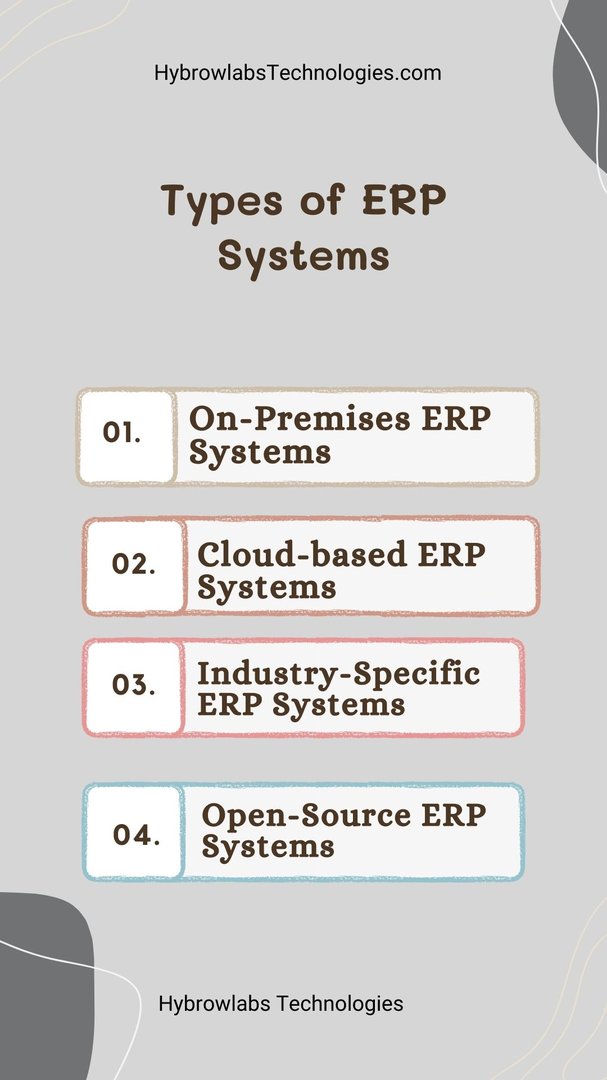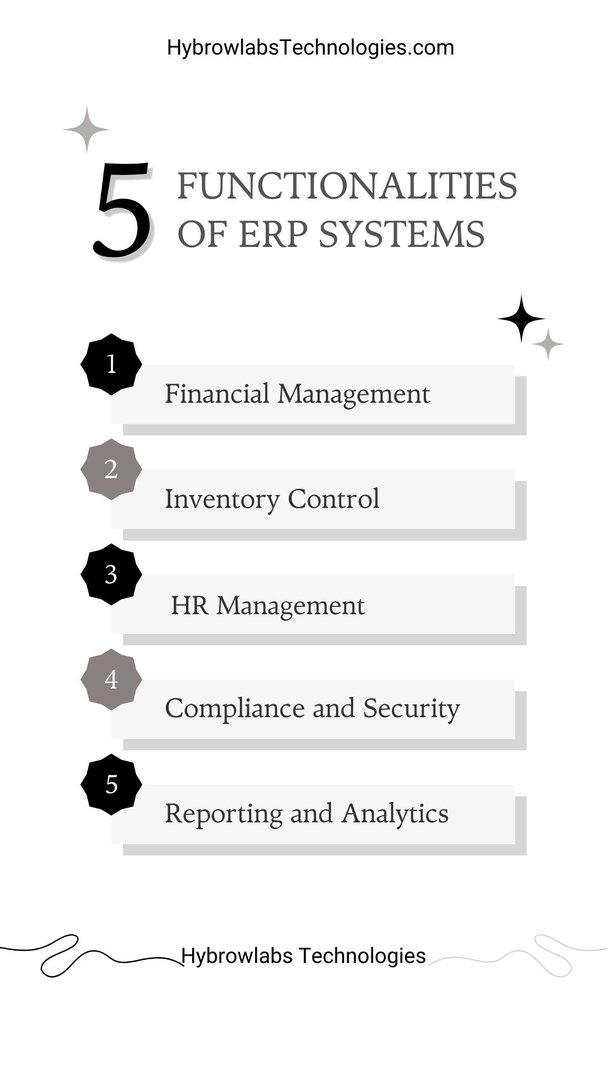In today's fast-paced and competitive business landscape, efficient management of resources and data is paramount for success. This is where Enterprise Resource Planning (ERP) systems come into play. ERP systems are comprehensive software solutions that streamline business in low code and integrate various business processes, making them indispensable tools for modern businesses. In this article, we will delve into the world of ERP systems and shed light on why ERPNext stands out as a suitable choice.
II. Understanding ERP System Varieties

A. Different Types of ERP Systems
- On-Premises ERP Systems: These are traditional ERP systems that are installed and hosted on a company's own servers. They offer complete control but require substantial IT infrastructure and maintenance.
- Cloud-based ERP Systems: Cloud ERP solutions are hosted off-site, providing scalability, accessibility, and cost-efficiency. They are becoming increasingly popular due to their flexibility.
- Industry-Specific ERP Systems: Some ERP systems are tailored to specific industries, such as manufacturing, healthcare, or retail. They come with industry-specific features and modules.
- Open-Source ERP Systems: Open-source ERP solutions like ERPNext offer customization, flexibility, and cost savings through community-driven development.
B. Importance of Choosing the Right ERP System
- Alignment with Business Needs: Selecting an ERP system that aligns with your specific business requirements ensures optimal utilization and value.
- Efficiency and Productivity: A well-suited ERP system streamlines operations, reduces manual work, and enhances overall efficiency and productivity.
- Scalability: Scalable ERP systems can grow with your business, accommodating expansion and changes in your operations.
- Data Integration: ERP systems integrate data from various departments, providing a unified view of business processes and improving decision-making.
C. Key Features and Functionalities

Different ERP systems offer various features and functionalities, including:
- Financial Management: Managing finances, accounting, and budgeting.
- Inventory Control: Tracking and managing inventory levels.
- Human Resource Management: Handling HR processes like payroll and employee management.
- Customer Relationship Management (CRM): Managing customer interactions and data.
- Supply Chain Management: Optimizing the supply chain for efficiency.
- Reporting and Analytics: Generating insights through data analysis.
- Compliance and Security: Ensuring data security and regulatory compliance.
III. Introducing ERPNext
A. Overview of ERPNext
ERPNext is an open-source, cloud-based ERP system that has gained recognition for its robust features and adaptability. It was developed in India and has been embraced by organizations worldwide. Here's a brief overview of ERPNext:
- Origin: ERPNext was developed by the company Frappe Technologies and has been in continuous development since 2008.
- Open Source: Being open-source means that the software's source code is freely available for modification and customization, making it cost-effective and flexible.
- Cloud-Based: ERPNext is accessible from anywhere with an internet connection, eliminating the need for on-premises servers.
B. Key Features and Capabilities of ERPNext
- Modular Design: ERPNext offers a modular structure that allows businesses to select and configure the specific modules they need, promoting efficiency and cost savings.
- User-Friendly Interface: Its intuitive and user-friendly interface makes it accessible for both tech-savvy and non-technical users.
- Scalability: ERPNext is designed to accommodate the growth of businesses, making it suitable for small startups to large enterprises.
- Customization: The open-source nature of ERPNext enables extensive customization to meet unique business needs.
- Community and Support: A thriving community of users and developers provides support and continually enhances the system.
C. Comparison with Other ERP Systems
To better understand ERPNext's position in the market, here's a brief comparison with other popular ERP systems:
| Feature | ERPNext | SAP ERP | Oracle ERP |
| Deployment | Cloud/OpenSrc | On-Premises | On-Premises |
| Cost | Cost-Effective | High | High |
| Customization | Highly Customizable | Moderate | Moderate |
| User-Friendly | Yes | Complex | Complex |
| Community Support | Strong | Strong | Strong |
| Scalability | Excellent | Excellent | Excellent |
The Suitable Choice: Why ERPNext Stands Out

A. Comprehensive Suite of Applications
ERPNext offers a vast array of modules and applications that cover every facet of business operations, making it a one-stop solution for organizations of all sizes. Here's a detailed explanation of the wide range of modules and applications ERPNext provides:
Finance and Accounting: ERPNext simplifies financial management with features like general ledger, accounts payable, accounts receivable, and financial reporting.
- Inventory Management: It allows businesses to efficiently track and manage their inventory, ensuring optimal stock levels and minimizing wastage.
- Sales and CRM: With tools for managing leads, opportunities, and customer relationships, ERPNext helps boost sales and improve customer satisfaction.
- Human Resources: ERPNext includes features for managing employee data, payroll, attendance, and recruitment, streamlining HR processes.
- Project Management: Businesses can plan, execute, and monitor projects effectively, ensuring they stay on schedule and within budget.
- Manufacturing: For manufacturers, ERPNext offers production planning, work order management, and bill of materials features to optimize production processes.
- Purchase and Supplier Management: It helps organizations streamline procurement processes, track supplier performance, and control costs.
- E-commerce Integration: ERPNext can be integrated with e-commerce platforms, enhancing online sales and order management.
These applications collectively cover various aspects of business operations, promoting efficiency, transparency, and collaboration across the organization.
B. Open-Source Advantage
One of ERPNext's most significant advantages is its open-source nature, which brings several benefits to the table:
- Cost Savings: Being open-source means there are no licensing fees, making it a cost-effective choice, especially for small and medium-sized businesses.
- Flexibility and Customization: ERPNext's open-source code allows organizations to tailor the system to their specific needs. This fosters innovation and allows for the creation of unique workflows and functionalities.
- Community Support: An active and passionate community of developers and users constantly improve and expand ERPNext's capabilities, ensuring it stays up-to-date and adaptable to evolving business requirements.
- Data Ownership: With an open-source ERP system, you have full control and ownership of your data, eliminating vendor lock-in concerns.
C. User-Friendly Interface
ERPNext boasts an intuitive and easy-to-navigate interface, which is crucial for efficient adoption across the organization. Employees can quickly learn how to use the system, reducing the learning curve and maximizing productivity. The user-friendly interface enhances collaboration and communication between teams, further streamlining business processes.
D. Flexibility and Customization
ERPNext's flexibility is a standout feature. It can adapt to diverse business needs, whether you are a manufacturer, distributor, service provider, or retailer. The system allows for extensive customization, enabling businesses to tailor it to their unique processes. This means you don't have to change your workflows to fit the ERP; instead, the ERP fits your workflows.
E. Cost-Effectiveness
Compared to proprietary ERP solutions, ERPNext offers a highly cost-effective alternative. The absence of licensing fees and the option to host it on your own servers or in the cloud significantly reduces the total cost of ownership. This affordability makes ERPNext particularly attractive to small and medium-sized businesses looking to optimize their operations without breaking the bank.
F. Cloud Integration and Accessibility
In today's digital age, the ability to work remotely and scale up or down as needed is essential. ERPNext excels in this regard, offering robust cloud integration capabilities. This allows for easy access to critical business data and processes from anywhere, promoting remote work and ensuring scalability as your business grows.
Considerations for Implementation
Before implementing ERPNext in your business, consider the following factors:
A. Factors to Consider
- Business Needs: Assess your organization's specific requirements and objectives to ensure ERPNext aligns with your goals.
- Data Migration: Plan for the smooth transfer of existing data into the ERP system to minimize disruptions.
- Change Management: Prepare your employees for the transition to the new system through training and clear communication.
- Hardware and Infrastructure: Ensure your hardware and network infrastructure can support ERPNext, whether it's hosted on-premises or in the cloud.
B. Best Practices
- Engage Stakeholders: Involve key stakeholders in the selection and implementation process to gain their buy-in and ensure their needs are met.
- Test and Pilot: Conduct thorough testing and consider a pilot phase to identify and address any issues before full-scale deployment.
- Training: Invest in comprehensive training for your employees to maximize their efficiency and minimize resistance to change.
- Data Security: Implement robust security measures to protect sensitive business data.
Conclusion
In the world of ERP systems, ERPNext emerges as the suitable choice due to its comprehensive suite of applications, open-source advantage, user-friendly interface, flexibility, cost-effectiveness, and cloud integration capabilities. By carefully considering your organization's needs and following best practices during implementation, you can harness the full potential of ERPNext to drive growth, efficiency, and success. For understanding and getting started with ERP implementation you can contact us at Hybrowlabs official website.
FAQs
1. Is ERPNext suitable for small businesses?
Yes, ERPNext is an excellent choice for small businesses due to its affordability, scalability, and flexibility.
2. Can I customize ERPNext to match my unique business processes?
Absolutely. ERPNext offers extensive customization options, allowing you to tailor the system to your specific needs.
3. What is the cost of ERPNext compared to proprietary ERP systems?
ERPNext is typically more cost-effective, as it is open-source and does not require expensive licensing fees.
4. Is ERPNext suitable for remote work and cloud integration?
Yes, ERPNext excels in cloud integration, making it ideal for remote work and scalability.
5. How can I ensure a smooth ERPNext implementation in my organization?
Engaging stakeholders, thorough testing, comprehensive training, and robust data security measures are key to a successful ERPNext implementation.



672787.jpg)


a3dc85.jpg)
.jpg)
fd8f11.png)


.jpg)
.jpg)